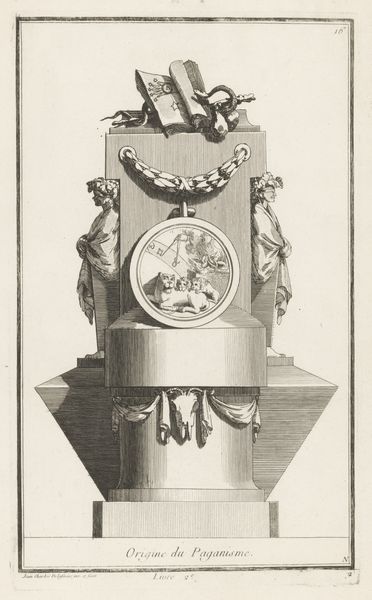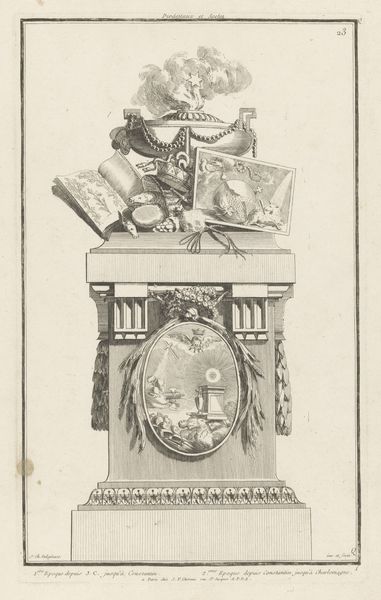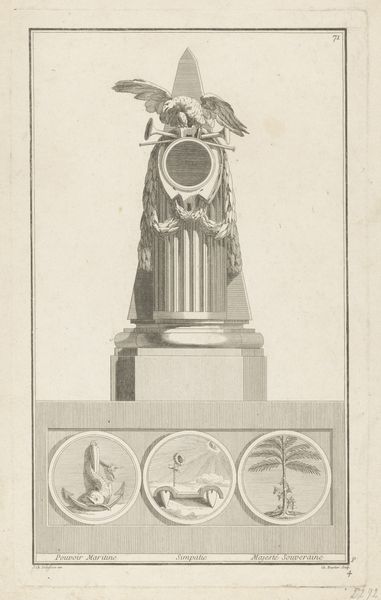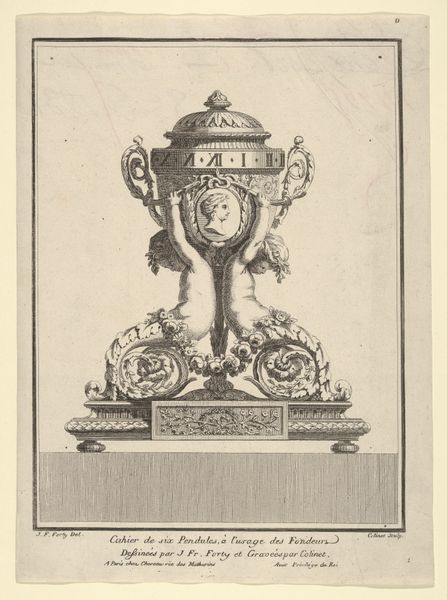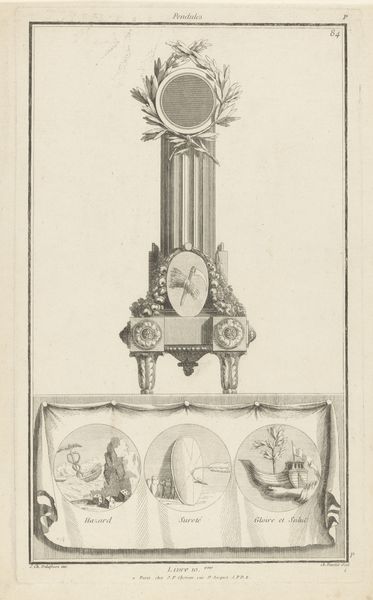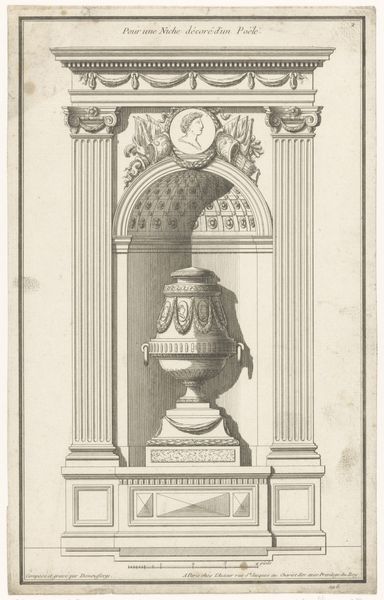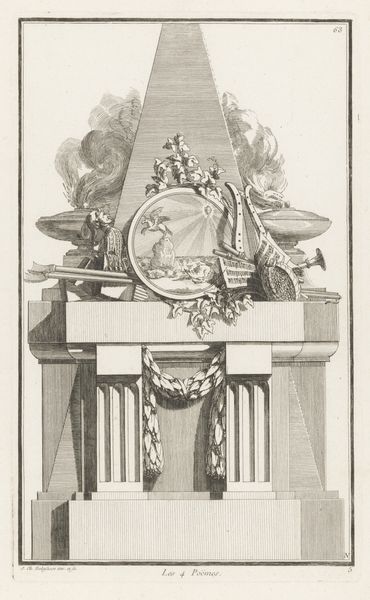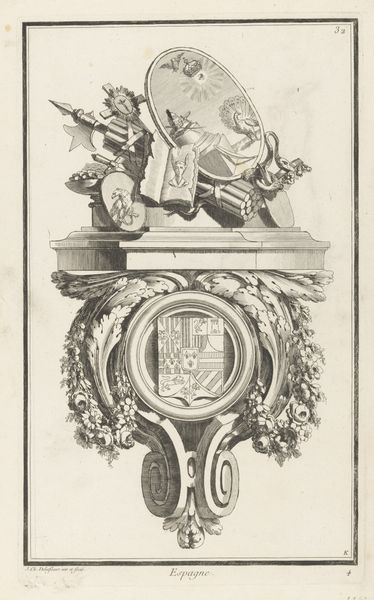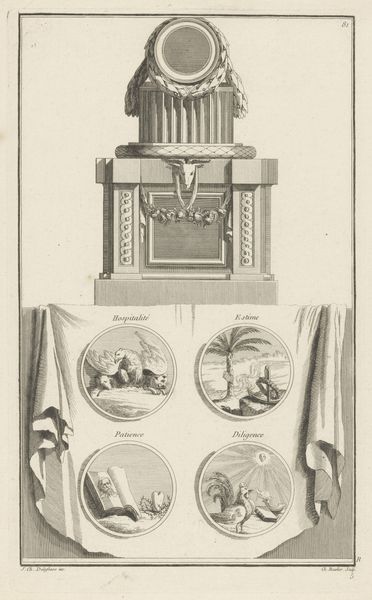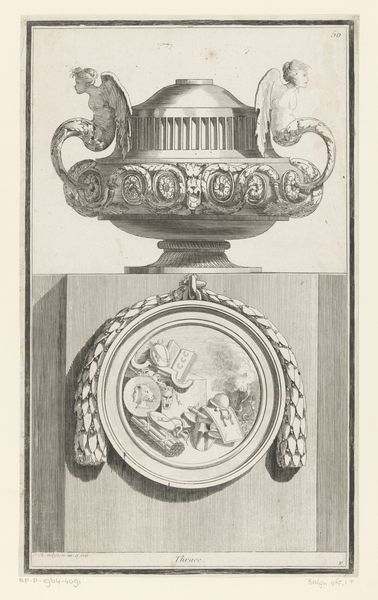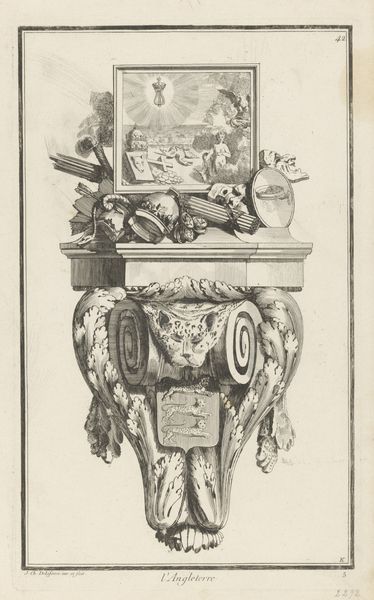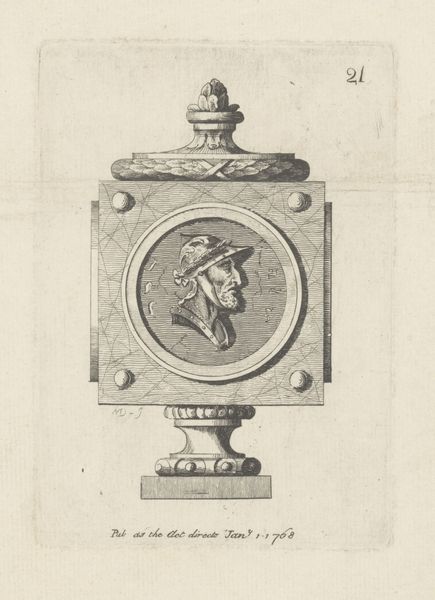
Dimensions: height 390 mm, width 236 mm
Copyright: Rijks Museum: Open Domain
Editor: This is “Economie, stilte, goddelijkheid en eeuwigheid” – "Economy, Silence, Divinity, and Eternity" – an engraving by Charles Beurlier from around 1770. It’s very detailed, with a central structure and four circular emblems, each representing a different concept. It strikes me as both elaborate and rather mysterious. How do you interpret this work? Curator: Well, it’s more than just mysterious; it's a visual encoding of power dynamics from the late 18th century. Each emblem and symbol invites us to unpack its socio-political weight. "Economy," "Silence," "Divinity," "Eternity" – these are not abstract virtues but tools utilized by the ruling class to maintain order and control. Consider how the “silence” emblem might relate to the suppression of dissent during that era. What connections might we draw between this piece and, say, the writings of Foucault on power and discourse? Editor: So, you're suggesting the image isn't simply about these positive concepts, but about how they were used to reinforce authority? The "silence" medallion, for example… I see a heart pierced by a key over a fish – suggesting, perhaps, a silencing of emotion or instinct? Curator: Precisely. The personal is political, and even concepts like “divinity” and “eternity” play roles in shaping cultural values and norms, promoting hierarchy and obedience. We can use intersectional feminism as our analytical framework; we can ask: How do these symbols implicate issues of gender, race, and class, in maintaining the power of particular social orders? Consider the absence of marginalized voices. Whose economy is being depicted, and at whose expense? Editor: That definitely changes how I see it. I was focused on decoding the literal symbols, but now I realize that the real meaning lies in understanding the power structures they reflect. Curator: Absolutely. It prompts a dialogue. It urges us to reflect on art's role as a product of historical, ideological forces. Editor: This was helpful; I think I'll be able to appreciate the symbolism here from now on!
Comments
No comments
Be the first to comment and join the conversation on the ultimate creative platform.
